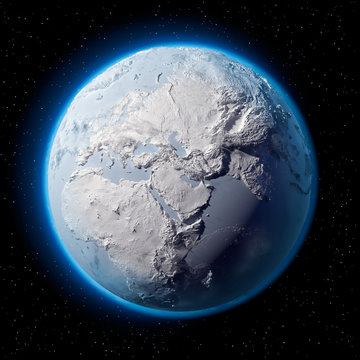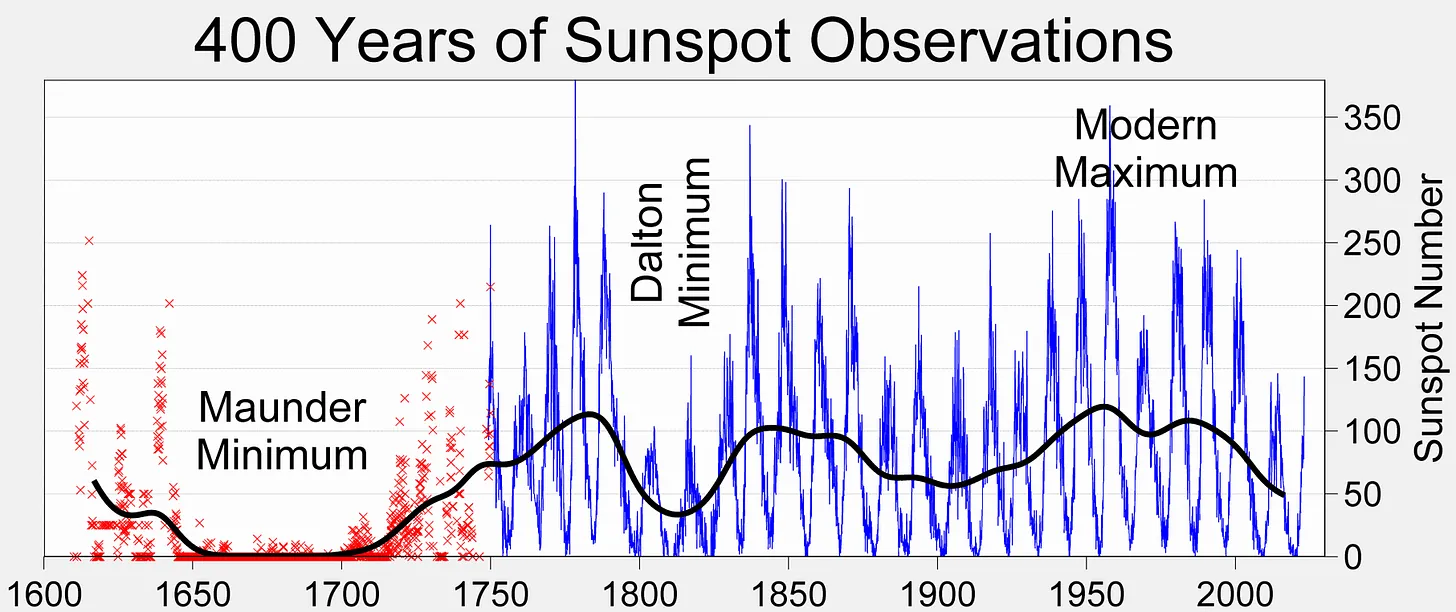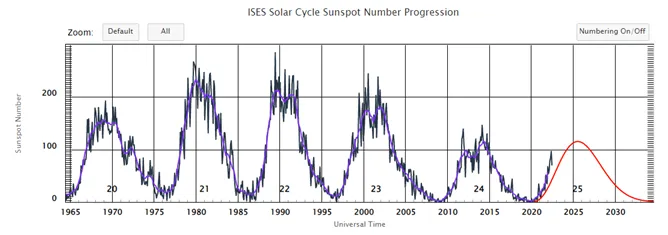I’m not a trained scientist. I’m a historian, or more precisely a history educator. That’s my field, and so I’ve been wary of writing too often about the scientific evidence for global cooling.
Then something hit me. Greta’s not a scientist. Gates is not a scientist. Heck, most ‘climate scientists’ aren’t even real scientists.
So that settles it. We’re as qualified as any of those people to discuss ‘the science’ of climate. Let’s do it.
The climate is not a static thing. It’s not a linear thing. It’s not a thing that only goes in one direction.
The climate is a dynamic system which behaves in a cyclical fashion and has done since the time of Creation.
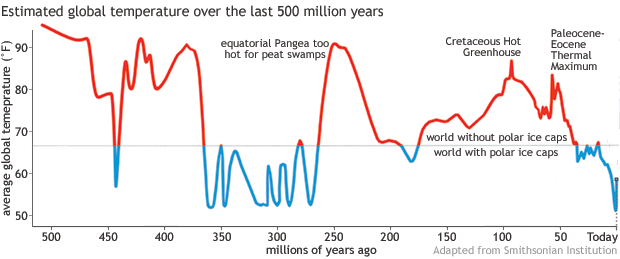 We happen to live in a pretty cold epoch, overall. At the highest timeframe, we’re in the Holocene interglacial period. It began about 11,700 years ago, meaning this brief warm patch is getting quite long in the tooth. We’re due to head back into an extended ice age any time now.
We happen to live in a pretty cold epoch, overall. At the highest timeframe, we’re in the Holocene interglacial period. It began about 11,700 years ago, meaning this brief warm patch is getting quite long in the tooth. We’re due to head back into an extended ice age any time now.
The climate cycle isn’t just evident over millions of years, however. It’s clearly evident even when we look at temperatures over hundreds of years. Historians have identified warm and cool periods throughout history, and these clearly line up with periods of civilisational expansion and contraction.
The Roman Warm Period, for example, was a time of relative peace and prosperity. The collapse in global temperatures during the 12th century BC coincided exactly with the Bronze Age Collapse. Warming, good. Cooling, bad. Unless you’re a barbarian marauder, perhaps.
What is boils down to is that, if you want a cosy life, you want to live through a warm period.
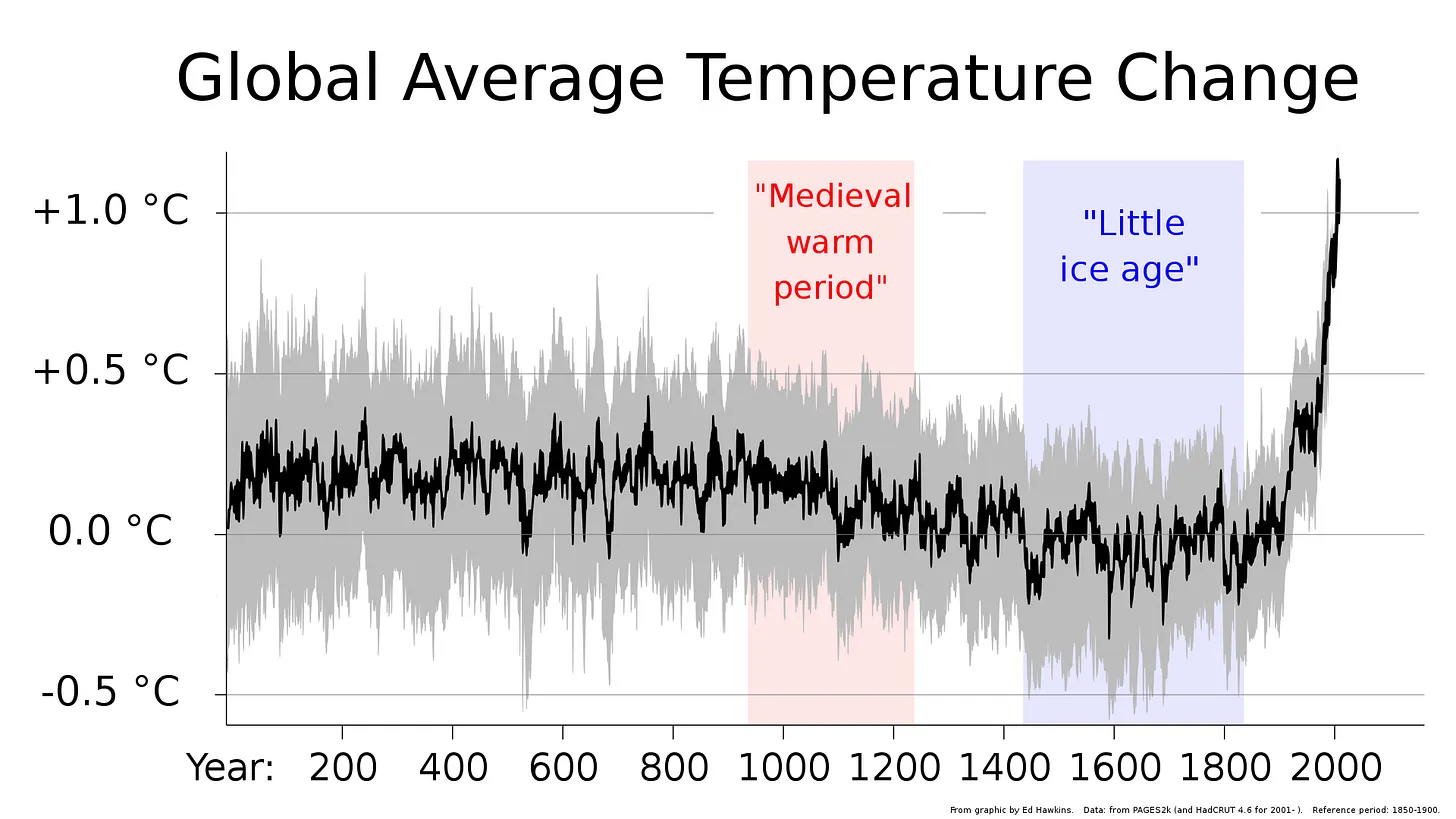 Note the silly ‘hockey stick’ on the far right. The Climategate email scandal revealed this is all total nonsense. But let’s stick to science rather than propaganda.
Note the silly ‘hockey stick’ on the far right. The Climategate email scandal revealed this is all total nonsense. But let’s stick to science rather than propaganda.
The Medieval Warm Period enabled the High Middle Ages. Go and look at a 13th-century European cathedral to see how magnificent that was. The Little Ice Age began in the catastrophic 14th century, during which over half of Europe died due to war, famine and plague. That was the century of the Black Death.
Very importantly for anyone interested in Earth’s climate, the cycle of warm and cold periods on Earth also lines up with solar cycles.
When we talk about solar cycles, it’s not about how much heat is coming directly from the sun. That’s called total solar irradiance (TSI) and has very little to do with Earth’s climate cycle. It’s pretty much static over time. The deep state propagandists who push manmade global warming theory write plenty of articles debunking solar global cooling by focusing only on TSI. I’m looking at you, NASA. This is disinformation, and it’ll usually appear at the top of any internet search results.
The sun’s key role in driving Earth’s short- and long-term climate cycles is driven by a far more complex mechanism. Once you see it, though, it’s impossible to deny.
The sun has a short-term energy cycle of 11 years and longer-term cycles as well. Think of a wind chime of varying lengths all vibrating, but at different speeds. It’s called a fractal vibration pattern, but now I’m straying into maths and that’s definitely outside my area of expertise so let’s get back to climate.
These solar energy output cycles can be measured via sunspot counts. This is because sunspots are regions of strong magnetic fields on the sun. They can cause solar flares or the more dangerous coronal mass ejections (CMEs). These solar flares also have a cyclical rhythm to them; scientists have even detected an electromagnetic ‘solar heartbeat’ during them.
It’s well-known among amateur radio enthusiasts and satellite operators that solar flares impact communications on Earth. What is also evident from a chart of the last 400 years of observed sunspots is that they correlate with the planet’s climate cycle.
This is really, really important.
Those minimum periods you see refer to Grand Solar Minima; periods of reduced solar energy output. They are also periods during which Earth’s average temperatures dropped significantly. The Modern Grand Solar Maximum, which we came out of in 2020 at the beginning of Solar Cycle 26, was a period of above-average temperatures.
The Modern Grand Solar Minimum, which began three years ago, will be a period of increasing global cooling. The sun is dozing off again, and this is potentially catastrophic for advanced civilisation in the world today.
The mechanism for exactly how these fluctuations in the strength of the sun’s electromagnetic field drive climate on Earth is quite complex, and this article is already getting a bit long. I’ll lay out the science behind that mechanism in my next article.
In the meantime, here’s a thorough outline of the climate history of Earth for the last 2000 years showing the various cycles that you can watch on Rumble. If you know anyone still caught up in the carbon climate cult who needs liberating, maybe send it to them.
If we’re going to give up cars and eat ze bugs, we should at least do it for something that’s real. Not nonsense.

